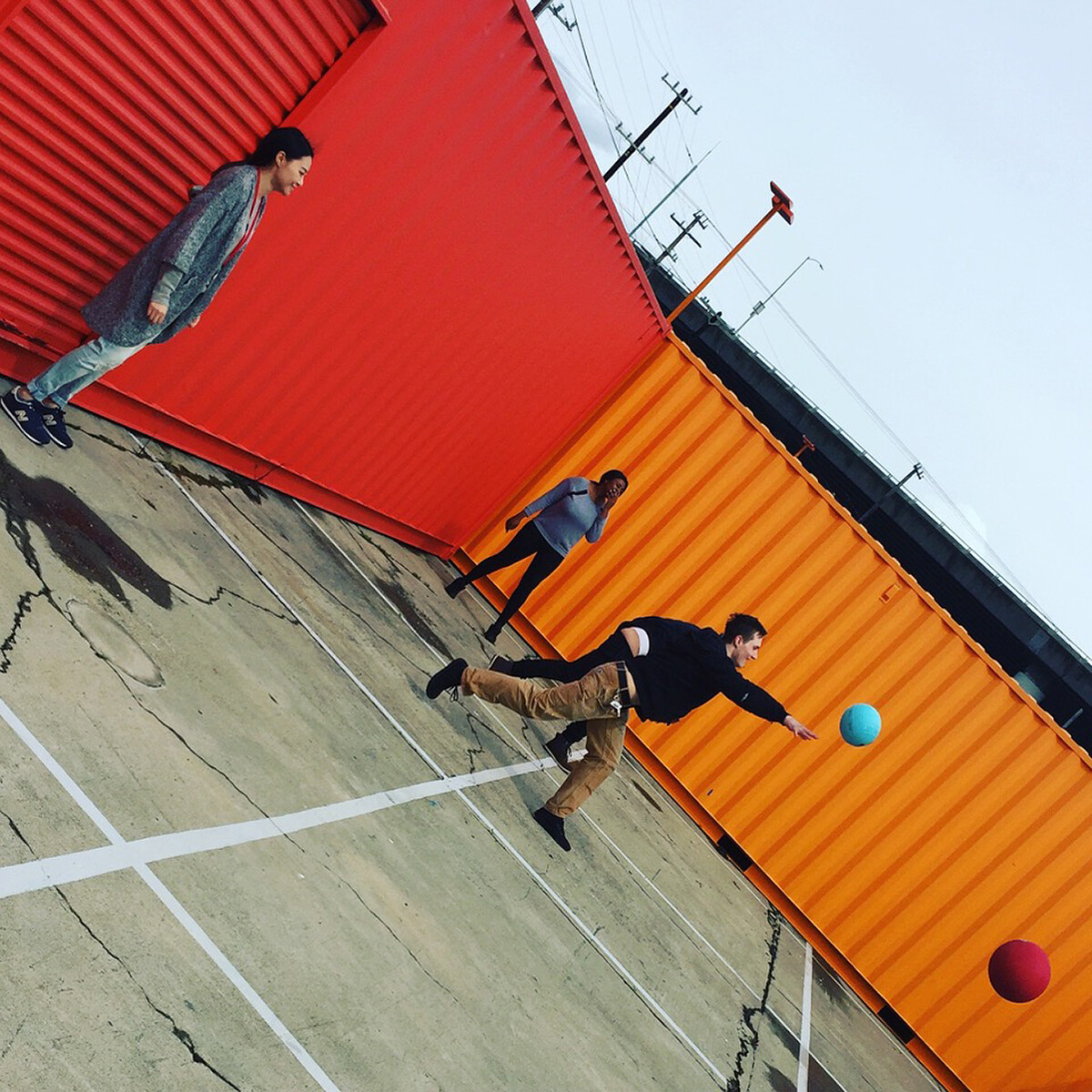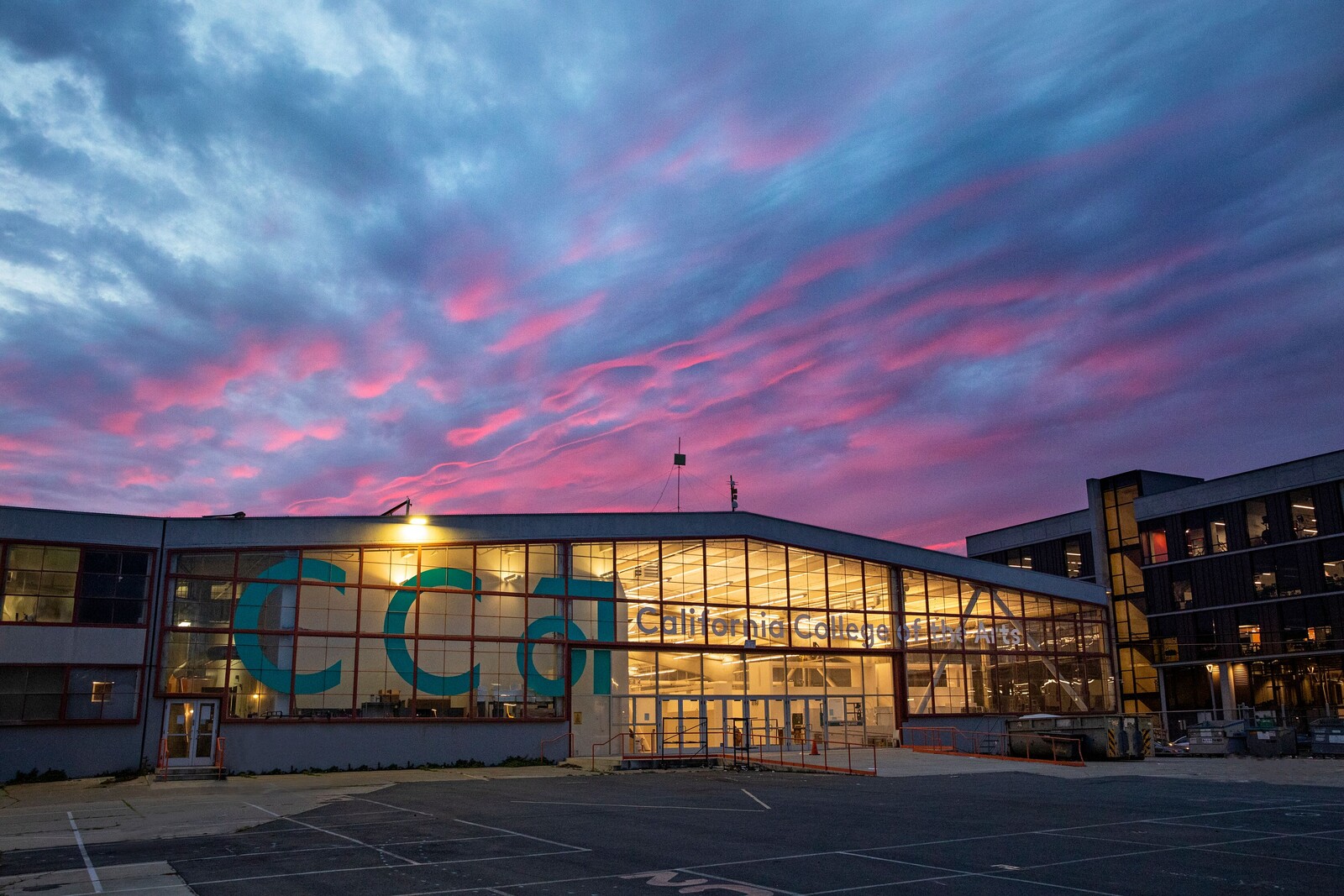1. Why did you decide to go into teaching?
My teaching narrative is surprisingly organic. I had been writing about art—criticism, interviews, and essays—and curating shows and had become very much a part of the Bay Area art community. I was asked, separately, by an artist who I had worked with and a curator who I had met socially to step in to teach as an adjunct. It seems strange to think about it now, but at the time, I hadn’t really considered teaching as an option. But the opportunity was really a godsend. I had been working alone as a writer, and the dialogue inherent in the classroom provided such meaningful input. And getting a regular paycheck and institutional affiliation was a terrific bonus. My first courses were a contemporary art survey and a professional practices course, both of which related to my professional experience. Engaging in dialogue and finding out about artists’ perspectives has been invaluable. The dynamic really worked—I remember when a guy in the first class I taught at California College of the Arts told me I was a natural. So, I kept at it. I feel so lucky to have been able to work in this field.
2. What drew you to your school and what is your teaching philosophy?
CCA is very much a part of my community, and what I appreciate about it is the school’s interdisciplinarity. There are many different creative programs that allow for the cross-pollination of ideas and practices. I find it most exciting when students from different departments are able to work together and share resources. On the graduate level, I’ve worked with students in fine arts, curatorial, design, visual studies, and critical studies. There is an interdisciplinary studio program for undergrads where I had students working in even more media. There, I did a class that involved the interdisciplinary realm of fitness, which was edifying and a whole lot of fun!
The focus on one-on-one studio visits is also something that I appreciate. In graduate fine arts, this is called “Independent Studio Critique.” There’s an intimacy to these studio visits, and an investment in projects over time that can be particularly satisfying. The school’s philosophy strikes a healthy balance between artistic integrity and the reality of professional practices. CCA students reflect that, and it has been super exciting to see students blossom in the real world.
My teaching philosophy builds on this and includes opportunities for students to tie their classroom experience to professional situations or to communicate with people outside the educational context. I present myself as an interested party, viewing their work from the critical standpoint I would take if I was writing about it. My perspective as a professor is to value what each artist has to say about their own work and raise pertinent, productive questions.
3. What theory and art history do you consider most essential for your students? What artist or artwork do you refer to most often?
This isn’t an easy question these days as so much seems to be changing. The professional practices course that I teach is much less theoretical in nature, and working with artists individually, I like to tailor reading suggestions to the specific artist’s project.
4. How do you navigate generational or cultural differences between you and your students?
One of the most exciting aspects of teaching is the conversation: the back and forth, finding common ground, and differences in perspectives. My teaching philosophy really relies on the idea of going through a process together. I feel like I learn so much from the students, particularly those who are international. Over the last year, many of my students were women artists from China, members of a generation whose work applies feminist perspectives to traditional forms. It was fascinating to learn more about this perspective. Discussion with the artists illuminated the cultural nuances at play and how these can be communicated in different contexts.
Positive energy and humor are other ways to bridge differences and make clear that we are all on the same page. We all want to generate effective art and conversation. We are all interested in the same thing—a friendly critical dialogue.
5. What changes would you like to see in art education?
Access, particularly when it comes to the financial side of education, is the area most in need of change. Education in so many fields has become incredibly expensive. In terms of art, this can stifle creativity. It adds stress and anxiety. Obviously, this is a large and difficult area to consider, though I think as the art world is shifting post-pandemic, so too are educational models. In that way, this is an exciting time. CCA is also unifying its campus to foster more cross-pollination, which only adds to the sense of possibility for changing models of education.
6. What is your educational background? Did you arrive at art from another field?
I studied studio art in undergrad, and got an MFA in creative writing (many years later). As I mentioned, I took my skills to the realms of writing and curating. I also worked as a graphic designer for some art-related businesses to pay the bills. I was also lucky enough to be a freelance writer during the first dot-com boom, when words were a more valuable commodity—that is, there was a lot of work in developing content for websites and covering art-related tech innovations for various publications. This provided some great lessons in how art is viewed in media by general audiences and in how the art world works from the inside out.
7. How have recent cultural movements and activism informed your curriculum?
I’ve been teaching for nearly two decades and I have really appreciated the many shifts that have occurred in the last few years. Much of this shift stems from cultural movement and activism, which reveal just how dynamic the education process really is. While I’ve always incorporated cultural context into class discussion, the Occupy movement really seemed to have activated students in a profound way. It seemed to provide an example of creative expression that could exist in another context, one between protest and production. Students worked in documentation, social practice, and protest-related actions and sculpture. In terms of my own curriculum, these cultural currents have led to a more expansive range of materials to be considered, as well as projects that engage with concerns at the heart of the most energized activism. The question of how to address cultural conditions without being didactic is always something that generates a lot of studio conversation.
8. How much structure or independence do students have in your courses?
As most of my classes are graduate level, I focus on independence. My goal is to work with students to be able to articulate their own positions vis-à-vis their work. The art world is full of codes but few hard-and-fast rules. There are many ways to navigate it, and the bottom line is that an artist must be able to articulate—“defend” seems like too harsh a word—their positions, decisions, and finished products. A two-year program is an important tool, but it is just a fraction of an artist’s life.
9. How does the program connect students to the surrounding art scene? How do they learn outside the classroom?
Offering components that exist outside the school context is a fantastic way to activate a course and thankfully CCA really supports this direction. I always include an element that connects the coursework to outside venues or behind-the-scenes looks at institutions. This is where I got my best education about art systems, going in the back door. Visits to institutions and guests work well. Finding venues outside of campus for exhibitions or projects requires being able to articulate a project to someone who has real-world considerations. My classes have involved exhibitions at commercial galleries, retail storefronts, and public streets. I have worked with different departments to publish student writing and find various other ways to generate achievements that can be listed on a CV.
10. What advice do you give to your students as they leave school and enter the field?
Be patient. We live in a culture that promises quick returns, same-day delivery, and the potential for immediate success. It’s possible, but rare. My advice is always to build a foundation within community. This is a way to build a practice and public awareness. Also, be as DIY as possible. If there is a way for you to make your own stuff happen, it’s great for building stamina. People grow into a practice. Finishing an MFA program is a beginning. Manage your expectations, but don’t stop working! And remember this is an arena that relies on relationships. Get to know people, know who you respect and have great conversations with. Those are the people and places that will make the struggles all worthwhile.















